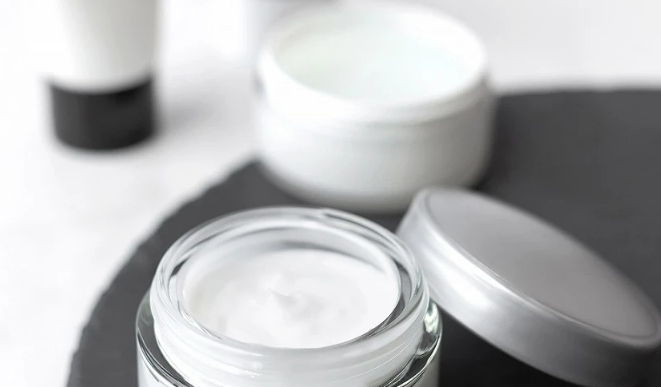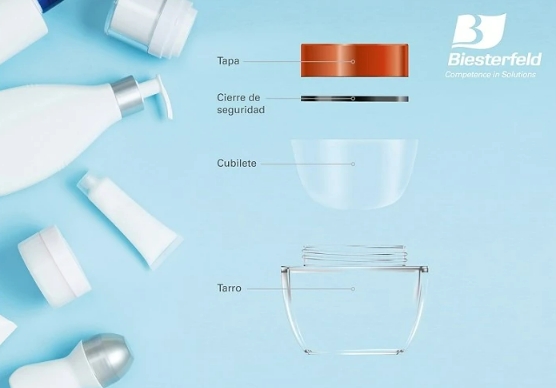Sustainable cosmetic packaging, how do I make my application more sustainable?
2024-04-28
Thanks to its high level of innovation, the plastics industry demonstrates time and time again that polymers and sustainability are inextricably linked. A segment in which recyclable and resource-saving materials are especially present is the packaging sector. It is not only the industry that is trying to find innovative solutions that can reduce the ecological footprint. Politicians are also pushing for more sustainable solutions through regulations. This makes selecting the right materials even more important to design packaging in a more sustainable way. This is particularly true for cosmetic packaging, one of the leading markets for sustainable packaging. As a distributor, Biesterfeld Ibérica advises its clients based on its years of experience, technical knowledge and extensive portfolio to make these applications more sustainable.

The cosmetics industry is booming: according to Fortune Business Insight, the market will grow an average of 9.8% annually until 2032. The production of cosmetic products also involves the production of packaging materials. This means that several million disposable containers, such as cans, cream jars and lids, are generated every year, which must subsequently be thrown away or recycled.
Awareness about sustainability has increasingly increased in recent years, both in society and at the state level. Ways are being sought to produce packaging so that it fulfills its purpose and at the same time leaves a better ecological footprint. One of these interventions from the state is the plastic tax in Spain, which applies to all non-reusable packaging and packaging made with non-recycled plastic. Spain is so far the first EU country to introduce this special tax: the cost is 0.45 euros per kilogram of non-recycled plastic. Biesterfeld Ibérica takes great care of details and exceptions and can offer its clients personalized advice. Even without formal state intervention, the sustainable transformation in the plastics industry in relation to packaging has long since begun.
Which plastics are suitable for sustainable cosmetic packaging?
Prescribers and processors are constantly looking for new and innovative product designs and materials that save resources and at the same time meet the imposed technical requirements. A whole range of different approaches are being questioned.
Polyolefins, for example, are often used in cosmetic packaging. Semi-crystalline thermoplastics are easy to process, have good chemical resistance and electrical insulation properties. They can be used in a variety of ways and are considered inexpensive plastics that can be easily recycled. As a more sustainable solution, Biesterfeld Ibérica recommends the use of polyolefins of biological origin, which are classified as drop-in products, or special high-quality recycled polyolefins.

Another group of plastics that can be used for casings such as cream jars are copolyesters. Thermoplastic copolyesters are characterized by properties such as high transparency, high fluidity, high chemical resistance and a good balance between toughness and rigidity. Furthermore, these materials can be easily recycled if assigned to IQR 1. Here too, more sustainable solutions have already been established, such as high-quality mechanically and chemically recycled copolyester products that do not suffer any loss in material quality. A major advantage is the high biocompatibility of the materials, which makes the plastic suitable for packaging in demanding and highly regulated areas.
In addition to the choice of materials, more and more packaging is appearing on the market that is reusable or completely recyclable. At the heart of it all is product design to ensure that the different types of polymers are separated according to their use.
What is the level of recyclability of my plastic?
The Resin Identification Code, also known as RIC, facilitates the identification of materials and thus guarantees the recognition of recyclable plastics. The RIC marking is used to identify the material and indicates what material the packaging is made of. A triangular arrow symbol contains a number from one to seven, below which a letter abbreviation is provided. While the number identifies the material, the letter abbreviation identifies the group of recyclable materials. Numbering is intended to help you classify the material and ideally dispose of it in the correct way.
Examples would be: RIC 1 for PET (Polyethylene Terephthalate). RIC 5 for PP (polypropylene). RIC 2 for HDPE.
With the right application experience for the right product
As a distributor, Biesterfeld advises its customers on the appropriate choice of material based on its wide range. Biesterfeld experts will find the right plastics for your individual applications and help you combine regulatory requirements with resource-saving production. They benefit from their extensive experience and discuss solutions to produce materials sustainably. Its portfolio includes numerous materials that can be used in the packaging sector. Distributors like Biesterfeld want to be close to customers and advise plastic users in a direct and personal exchange.




